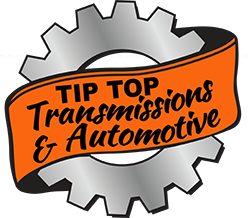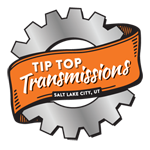There are a number of indicators in your vehicle that are meant to assist you with identifying issues taking place, and one of the most well-known here is the check engine light. The check engine light is also one of the broadest vehicle issue indicators — it can mean several different things, and getting to the bottom of it is important.
At Tip Top Transmissions, we’re happy to offer check engine light diagnosis as one of our numerous auto mechanic services to wide-ranging clients. We strongly recommend bringing your vehicle to us when this light comes on rather than attempting your own diagnosis, as there are many potential causes for the light to come on, and only a professional will be able to suss out which is affecting your vehicle specifically. With that said, there are some general reasons this light may come on that you should be aware of — here’s a rundown.

Engine Combustion or Functioning Issues
In some cases, the check engine light will come on due to an issue with the combustion process taking place in your vehicle’s engine. This could be anything from a problem with the spark plugs to an issue with the fuel injectors — both of which are critical components in this process.
For instance, if your spark plugs are damaged or dirty, they may not be igniting the fuel properly, leading to incomplete combustion. Incomplete combustion results in wasted fuel and can cause serious damage to your engine over time.
Similarly, if your fuel injectors are damaged or dirty, they may not be injecting the right amount of fuel into the engine, again leading to incomplete combustion. Improper fuel injection can also cause your engine to run lean, which means there’s not enough oil in the mixture and can cause serious damage.
O2 Sensor Issues
Another potential reason for your check engine light to come on is an issue with your vehicle’s O2 sensor. This sensor monitors the oxygen levels in your vehicle’s exhaust and sends information to the engine control unit. The ECU then uses this information to adjust the air-to-fuel ratio in order to keep your engine running properly.
If your O2 sensor is damaged or dirty, it may not be functioning properly and sending accurate information to the ECU. This can cause your engine to run too rich or too lean, as the ECU will be using incorrect information to adjust the air-to-fuel ratio.
Catalytic Converter Issues
The catalytic converter is a critical component of your vehicle’s exhaust system. Its job is to convert harmful emissions from your engine into less harmful ones before they’re released into the atmosphere.
If your catalytic converter is damaged or dirty, it may not be functioning properly and allowing harmful emissions to escape. This can cause serious damage to your engine and also lead to steep fines, as it’s illegal to release these emissions into the environment.
Misfiring Issues
In other situations, the check engine light may come on due to misfiring issues. Misfiring occurs when the air-fuel mixture in your engine doesn’t ignite properly, leading to incomplete combustion. This can be caused by a number of different issues, including damaged spark plugs, dirty fuel injectors, or a faulty O2 sensor.
Misfiring can cause serious damage to your engine, so it’s important to have it diagnosed and repaired as soon as possible.
Spark Plug Concerns
Many people have heard of spark plugs, but fewer are aware of their importance in the engine combustion process. Spark plugs are responsible for igniting the air-fuel mixture in your engine, and if they’re damaged or dirty, they may not be able to do their job properly. This can lead to incomplete combustion and serious engine damage.
In some cases, simply replacing your spark plugs can be enough to solve the problem and get your check engine light to turn off. However, it’s always best to have a professional diagnose the issue to be sure.
Gas Cap Undone
Many people have experienced this process: Your check engine light comes on, and you spend hours worrying about what could be wrong, only to find out that you left your gas cap undone. While this may seem like a silly mistake, it’s actually a very common one.
If your gas cap is loose or not properly secured, it can cause fuel vapors to escape. These vapors can contaminate your O2 sensor and cause your engine to run too lean or too rich. In some cases, simply tightening or replacing your gas cap can be enough to solve the problem.
In fact, this is often one of the first areas we recommend our customers check if their engine light is on, simply because it’s so easy to remedy.
Faulty ECU
Last but not least, in some rare cases the check engine light may come on due to a faulty ECU. The ECU, or engine control unit, is responsible for managing the air-fuel mixture in your engine and keeping it running properly. If it’s not functioning properly, it can cause your engine to run too rich or too lean, which can lead to serious damage.
In most cases, a faulty ECU will need to be replaced in order to solve the problem. However, it’s always best to have a professional diagnose the issue before taking any action.
For more on the possible causes behind your check engine light, or to have the issue diagnosed and repaired, contact our team at Tip Top Transmissions at your convenience.

